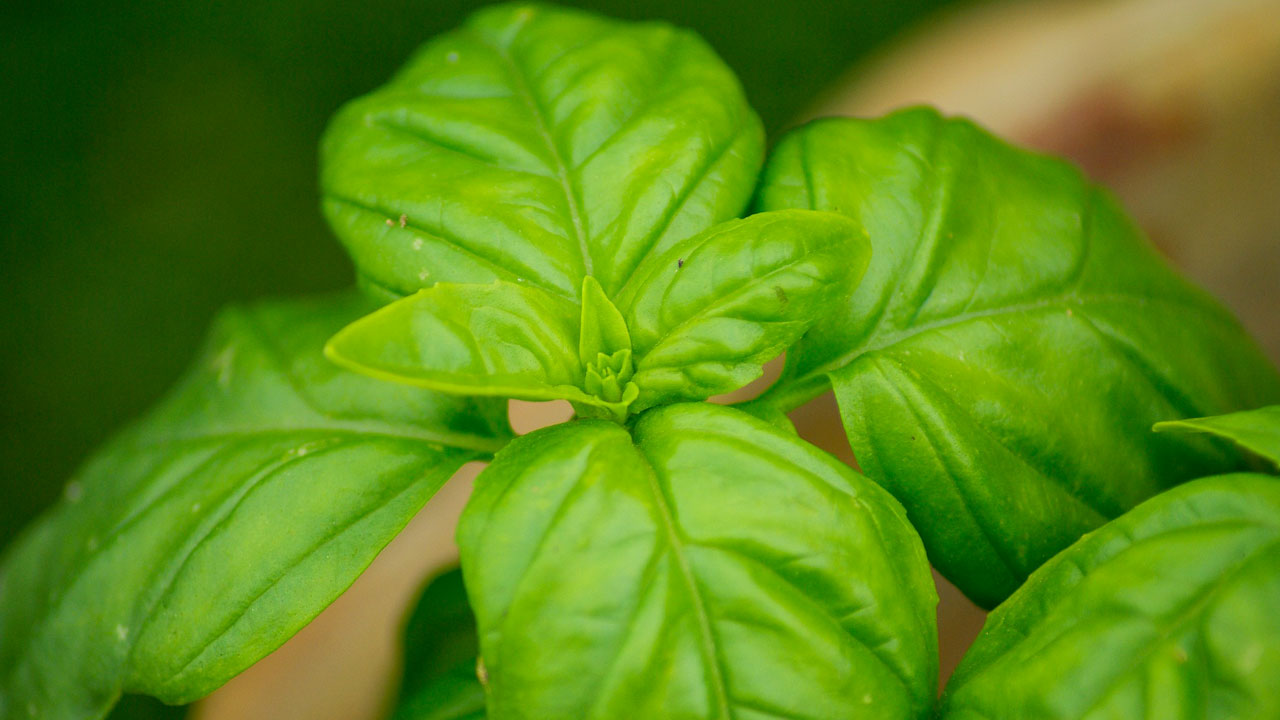Growing Your Own Herbs
Apr 21st 2016
Every Day is Earth Day at Dripworks. I know the theme this year is all about planting trees, but today I was inspired to write about how I celebrate our planet every day in the meals I prepare with my own fresh culinary herbs. They don’t take up much space to grow and they add spice to the rice, and a lot of flavor to meat, fish, poultry, or veggies. Sun and drainage are essential for most herbs. Some herbs double as everyday home remedies. They can be grown in a sunlit corner of your garden, on your deck, or even in your home on a south facing windowsill. Pick a spot that gets at least 4-6 hours of sunlight and allows for easy picking at mealtime. We plant most of the herbs mentioned here in the Dripworks Demonstration Garden.
Basil
If you love pesto, you’ll be happy to know that basil is very easy to grow, has a wide variety, and it can be harvested continually all summer until frost. I always plant two or three of the “Genovese” variety spaced three feet apart as it makes a very flavorful pesto. Its leaves are also excellent in salads or sandwiches. It’s easy to grow in a sunny spot if you use a fair amount of good organic compost and water moderately for vigorous growth all summer. Once the plant is 2’ tall, regular pruning back 1/3 of the plant will keep the stems strong and the growth habit thick. Using your blender, just add the basil leaves, olive oil, pine nuts or walnuts, and garlic cloves. Go online for basic recipes and customize to your own taste. At our house we freeze the pesto in small half pint ball jars for an entire year of pesto.
Cilantro
A staple of Mexican cooking, cilantro is an essential ingredient when making salsa and in so many other dishes. When baking, bar-b-quing, or frying fish, cilantro will add a distinctive flavor. Its young leaves are known to aid digestion and are touted to offer some protection from heavy metals sometimes found in fish. To grow cilantro, sow the seeds directly into your garden soil when warm spring weather arrives. Its leaves can be harvested all summer long. Regular pinching/pruning is essential to keep it from flowering so that the leaves stay strong and thick and the stalks don’t shoot up and start to droop. Its seed, known as the herb coriander, can be harvested in late summer.
Echinacea
Also known as purple coneflower, Echinacea is a favorite of mine for its beauty and its medicinal value. This flowering plant will bloom profusely all summer long and grow into a 3’ x 3’ spread. Its roots, when dried and ground up are known to improve the immune system and as being a mild antiseptic for cuts or wounds. Steeping the fresh cut flowers in warm water and making a wash or poultice can relieve the sting of insect bites. Although harder to find, this perennial also comes in white and yellow. This drought resistant perennial is easy to grow and will stand out in your herb garden. Echinacea grows best in full sun. Dig a hole 8”-10” deep and wide, fill it with good organic soil or compost, and plant. Make sure you have a drip emitter on either side of the plant.
Chamomile

Chamomile has endless uses. Its tiny yellow flowers bloom perennially, and it doesn’t need much attention. We have seen it used as a sleep aid and as a tea to calm the nervous system and the digestive system. Its list of remedies is quite extensive as it is used as a potion for cuts and bruises, as a hair rinse, and as a skin tonic. Often seen growing wild, this low growing plant can be planted from seed in thin soil or near pathways. It will need some water to get going but not much attention or water after a few months. In a garden bed, sow the seeds thinly and then cover lightly. Like other herbs, its potency or flavor improves when it is watered sparingly. Drip irrigation is perfect for this plant.
Calendula
Calendula is a beautiful perennial with bright yellow or orange flowers. It is very hardy and will offer a colorful display for many years. It grows well in almost any situation or soil. Choose a partial or full sun spot and start this plant when the soil reaches 60 degrees. In the old days the petals were used to staunch wounds. The petals are still a good treatment for cuts, bruises, spider and mosquito bites. When boiled, its flowers make a good face wash and acne scrub.
Aloe Vera
I know aloe Vera is not a culinary herb but it’s a well known remedy for its healing ability. It doesn’t require much water and is easy to grow. A sandy or light soil would be fine. Not much organic matter is necessary, just good drainage. Aloe can be grown in containers on a windowsill, on your deck, or in any sunny location. If the temperature in your area gets below 35 degrees, plant aloe in a container so that it can be brought indoors. When needed, just cut off a lower branch or part of a lower branch and use the juice on the affected part of your body for cuts, sunburn relief, wound healing, and it even helps acne problems.
These are obviously just a few herbs that can be easily grown and will add some spice to your life and wonderful flavor to your favorite dish. You can Google “growing herbs” to get a long list of ones that will do well in your area. Use them fresh all season long or they can be dried (basil can be used fresh or frozen for later) and containerized for future use in your kitchen or medicine cabinet.






